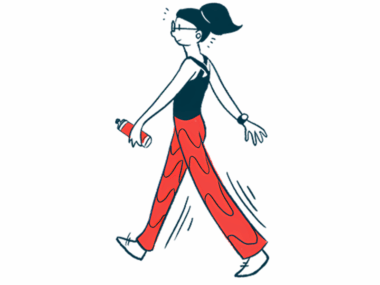Virtual Reality Upper Limb Training Feasible for MS Patients: Pilot Study
Physical exercise, rehab shown to aid MS symptoms, upper limb function
Written by |

XRHealth‘s virtual reality (VR) software, which provides an immersive three-dimensional environment where patients do repetitive tasks such as popping a balloon with a sword, is safe and feasible for upper limb training among people with multiple sclerosis (MS), according to a recent pilot study.
Participants generally felt engaged by the exercises and the physical therapist overseeing the program found it to be suitable for 87% of patients.
Future studies will work to establish the platform’s effectiveness on upper limb function, according to the company.
“The study proves that virtual reality rehabilitation is safe and engaging for MS patients,” Eran Orr, CEO of XRHealth, said in a company press release. “Mobility is often difficult for patients with multiple sclerosis and we believe XR and virtual treatment rooms in the metaverse ensures that patients can receive the rehabilitation that is much needed.”
The study, “The Design, Development, and Testing of a Virtual Reality Device for Upper Limb Training in People With Multiple Sclerosis: Single-Center Feasibility Study,” was published in JMIR Serious Games.
Upper limb dysfunction is common in MS patients and may include symptoms such as tremors, poor coordination, or muscle weakness that hamper the ability to perform daily activities independently.
Physical rehabilitation and exercise have proven effective at easing symptoms and improving limb function. A major limitation to such programs is compliance, however, as patients may not have access to equipment or expertise, or may not be able to get to a rehabilitation center.
Since keeping patients motivated is critical for making sure they can benefit from exercise programs, at-home training is one possibility for overcoming some of these limitations and taking part in a virtual environment may lead to even greater gains.
Using virtual reality environments in rehabilitation programs has been shown to improve gait, coordination, balance, posture, and upper limb function in MS.
“The virtual environment provides a therapeutic stage where patients feel like they are playing games and enjoying the process of recovery while being monitored and guided by a certified clinician,” Orr said.
XR’s VR software is cleared in the U.S., Europe, and Israel. It’s designed to be used with a VR headset that guides patients through exercises in a virtual environment, under medical supervision.
Virtual setting, real benefits
Researchers in Israel set out to determine the safety and feasibility of this approach among MS patients with upper limb impairments. The pilot study, funded by XRHealth, included 30 patients, ages 20–81, with moderate weakness in their arms and hands.
Participants underwent a single, 45-minute VR training session at the Sheba Multiple Sclerosis Center, Israel, between 2019 and 2020. While wearing the VR headset, they were asked to perform two activities involving arm and shoulder movements while seated and standing.
The first activity required patients to use both hands to pop balloons with a swipe of a sword. In the second activity, a motor cognitive training exercise, patients wore virtual gloves with different colors on both hands and were asked to hit light bulbs with the hand that matched the bulb color.
Sessions were overseen by a physical therapist who could view patients’ performance and adjust for difficulty as needed. In clinical practice, data from the software could also be collected for doctors to monitor patient improvements.
After the training, participants completed four questionnaires about the experience. Patients said they felt that both tasks were fun, easy to understand, simple to perform, challenging, and something they would repeat. Mean scores ranged from 3.1–3.73 out of four possible points for each question.
Participants also reported that the digital environment felt appropriate for them and helped them focus. Most felt the tool would help with practice adherence over time and that they would want to use VR to track their cognitive performance at home.
The physical therapist overseeing the sessions reported the training was suitable for 26 of the 30 participants (86.7%).
Side effects included fatigue, dizziness, and nausea. These were expected by the researchers and were temporary. Two people stopped the session due to fatigue and two reported interruptions to training because the cable from the headset got in the way.
While the study supports the feasibility for the XRHealth platform in MS patients with upper limb dysfunction, it lacked clinical measures of limb function to support its effectiveness.
“A larger and longer study with more sessions would provide the efficacy data needed to support the use of a VR environment for physical therapy in people with MS,” the researchers wrote.






